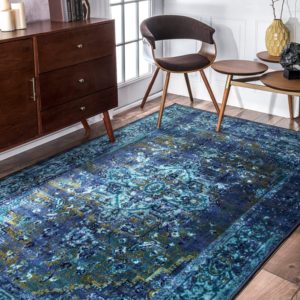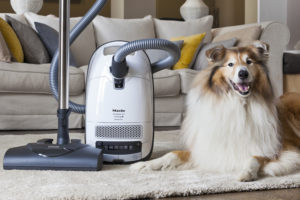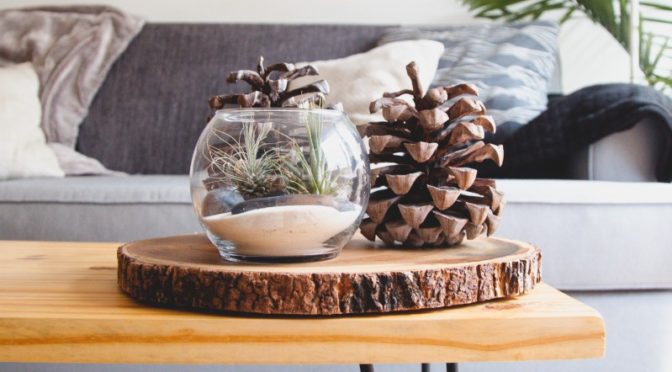
Triexta is undoubtedly one of the most talked about updates to the carpeting world, and it’s easy to see why; it’s been hailed as the successor to nylon in particular and synthetic carpet fibers in general, particularly with its reputation for durability and longevity paired with its affordability and availability in a wide range of colors. However, the question of whether triexta (marketed as SmartStrand among other brand names) is actually better than nylon is not so simple to answer. Today we’ll take a look at both fibers to help you figure out the pros and cons of each and which is likely to be better for your home.
How do triexta and nylon compare in quality and overall durability?

Perhaps the most important point to keep in mind about triexta and nylon is that both come in carpets of varying quality grades. As a result, neither fiber will automatically be better than the other all the time on every carpet you buy. You need an apples to apples comparison for valid results. When you do compare both fibers across equal quality carpets, you’re not going to see much of a difference. Nylon is more resilient on a molecular level than triexta-type fibers due to its design. However, that doesn’t necessarily translate into a longer-lasting carpet.
Part of what complicates the issue is the fact that nylon has a much longer history in carpeting than triexta, having been introduced in the 1950s. Triexta is much newer and it’s simply impossible to say a triexta-based carpet can last 30 years or more since the fiber itself didn’t exist that long ago. That said, based on all evidence from existing carpets, triexta does seem to be of equivalent durability to a same-grade nylon carpet, which means both are likely to be equally resistant to high foot traffic.
Which fibers come with longer warranties: nylon or triexta?

You can tell a lot about the quality of a carpet by its warranty; typically, the longer and more all-encompassing it is, the more years you’re going to get out of a carpet. And between nylon and triexta, triexta will win almost every time. Naturally, you’ll see a good amount of variation between manufacturers as well as between carpets, but in general, the more comprehensive warranties for similarly-priced carpets will be on triexta over nylon.
As an example, let’s say you want a basic triexta carpet from Mohawk’s SmartStrand series. An entry-level carpet will typically include 25 years’ worth of texture retention coverage as well as a stain and soil warranty good for the life of the carpet. However, the same caliber of nylon carpet will probably only give 10 years of texture retention coverage and a similar length in stain coverage. As a result, if you want the most for your dollar in warranty coverage, you’ll go farther with triexta than you ever will with nylon.
Which costs more per square foot? Nylon or triexta?

If you’re money conscious, you’re going to want to look at triexta over nylon, because it’s almost always going to be cheaper per square foot or yard. We’re not saying that every single nylon carpet on the market will be cheaper than every triexta option out there; we’re just saying that the overall trend points to triexta as the cheaper fiber. This is due to production costs; it takes more work to make a roll of nylon than it does to make a roll of triexta. As a result, you’re going to spend more to bring nylon home. It doesn’t mean the nylon will be of better quality; it just means it took more resources from the factory to make it.
Is triexta more resistant to staining and soiling than nylon?

Aside from its cost and durability, one of the biggest selling points of triexta is undoubtedly its stain and soiling resistance. Compared to nylon, it’s by far the superior fiber. This is due to the fact that at a molecular level, nylon is hydrophilic. If you’ve forgotten high school chemistry, this simply means that nylon loves water, which means it’ll readily absorb any liquid stains that are spilled onto its surface.

Triexta, in contrast, is hydrophobic; it naturally repels water and the stains that come with it. As a result, to make nylon stain resistant, it needs to be treated chemically, and if stains do make it through the protective coating, they can be a pain to remove. Triexta, in contrast, can frequently release stains simply through a water-based cleaning. As a result, not only is triexta a more child and pet-friendly carpet, it’s also a more environmentally-friendly option, as it doesn’t require additional chemicals to make it stain resistant and it doesn’t require chemicals to spot treat stains.
Which vacuum cleaners are best for cleaning triexta, nylon, and other synthetic fibers?

Regardless of which fiber you choose, the good news about cleaning triexta and nylon (as well as cheaper synthetics like polyester and olefin) is that you don’t need any vacuum in particular to clean them. However, we still recommend choosing machines that are going to do a thorough job no matter which style or pile of carpet you choose, as not all vacuums are equal in this regard. To be able to handle every style and pile you’re likely to come across, you’ll want a vacuum with an electric brush head. Additionally, if you have any bare floors (e.g., hardwood, vinyl, laminate, tile, or something more exotic), you’ll also benefit from a vacuum with a Parquet head to efficiently clean them. Two of the few vacuums that include both types of heads while offering buy-it-for-life reliability are the Miele Complete C3 Cat & Dog (reviewed here and here) and Miele Compact C2 Electro+ (reviewed here and here).
![]() You can buy the Miele Complete C3 Cat & Dog here on Amazon or buy the Miele Compact C2 Electro+ here.
You can buy the Miele Complete C3 Cat & Dog here on Amazon or buy the Miele Compact C2 Electro+ here.
![]() Canadians can buy the Miele C3 Cat & Dog here or buy the Compact Electro+ here.
Canadians can buy the Miele C3 Cat & Dog here or buy the Compact Electro+ here.
 If you find our research on PMC helpful, you can follow our efforts to keep maniacally reviewing home cleaning tools by shopping through our links above. We promise to keep fighting the good fight against every horror children, animals, and grown, yet messy humans can inflict upon a clean home.
If you find our research on PMC helpful, you can follow our efforts to keep maniacally reviewing home cleaning tools by shopping through our links above. We promise to keep fighting the good fight against every horror children, animals, and grown, yet messy humans can inflict upon a clean home.

